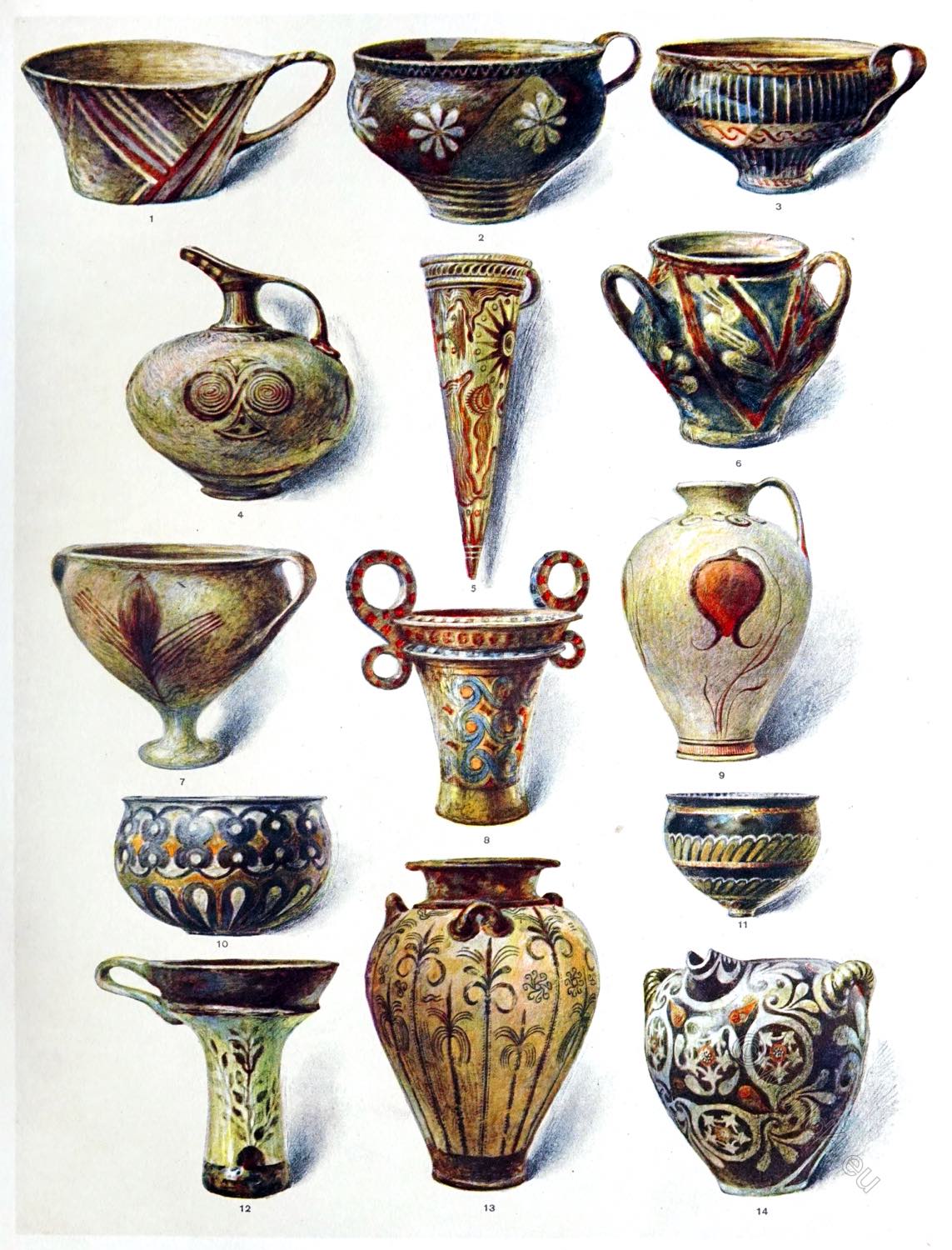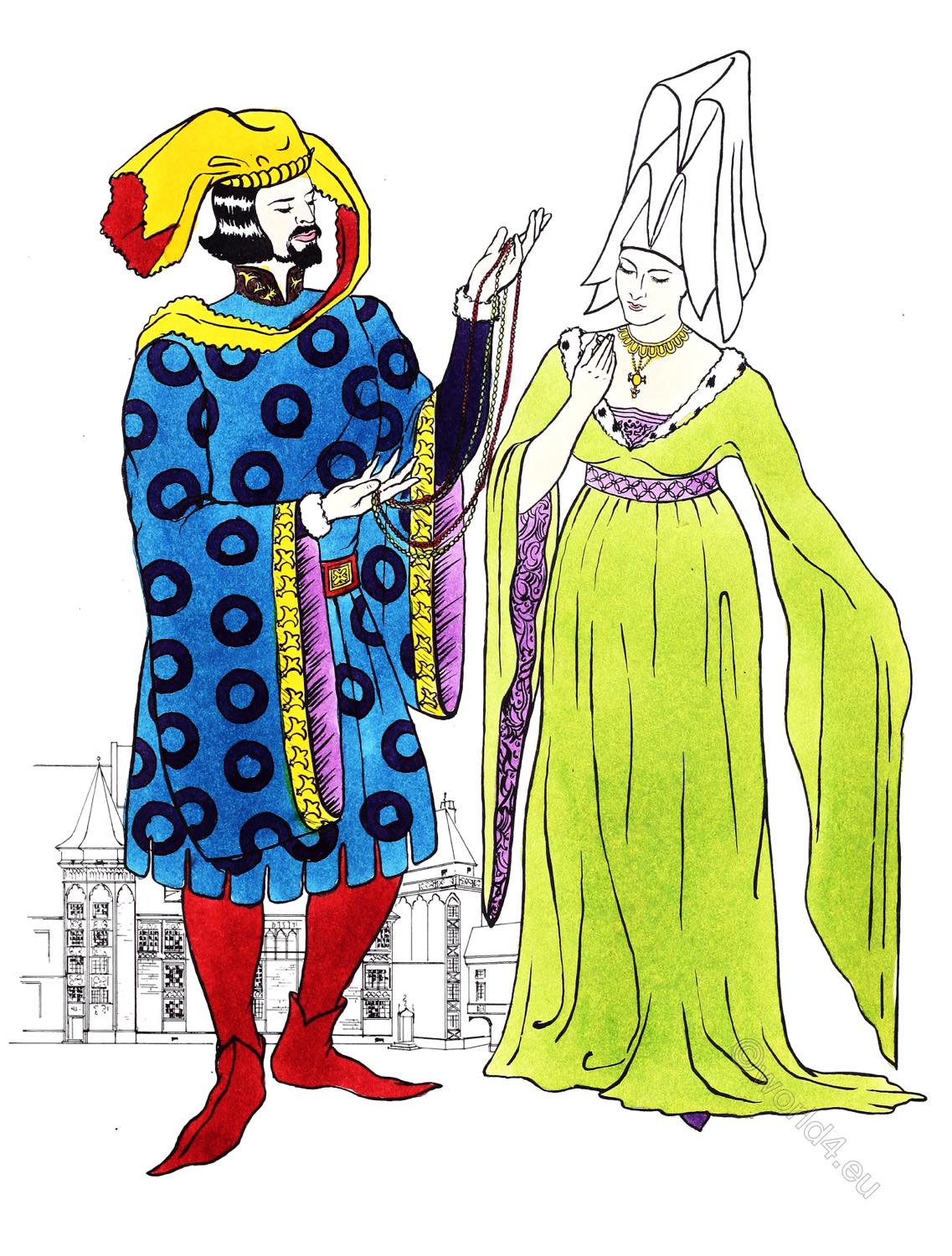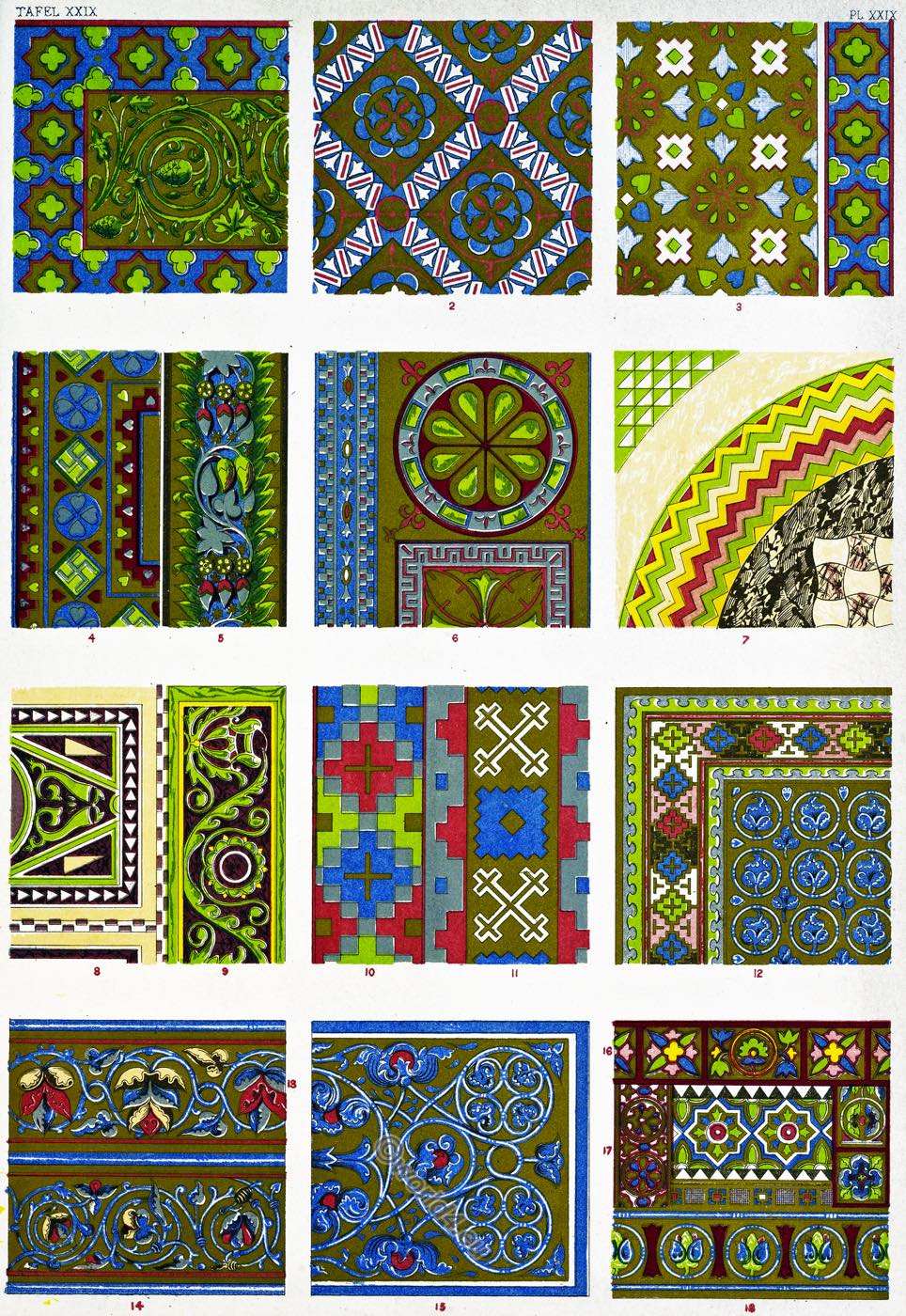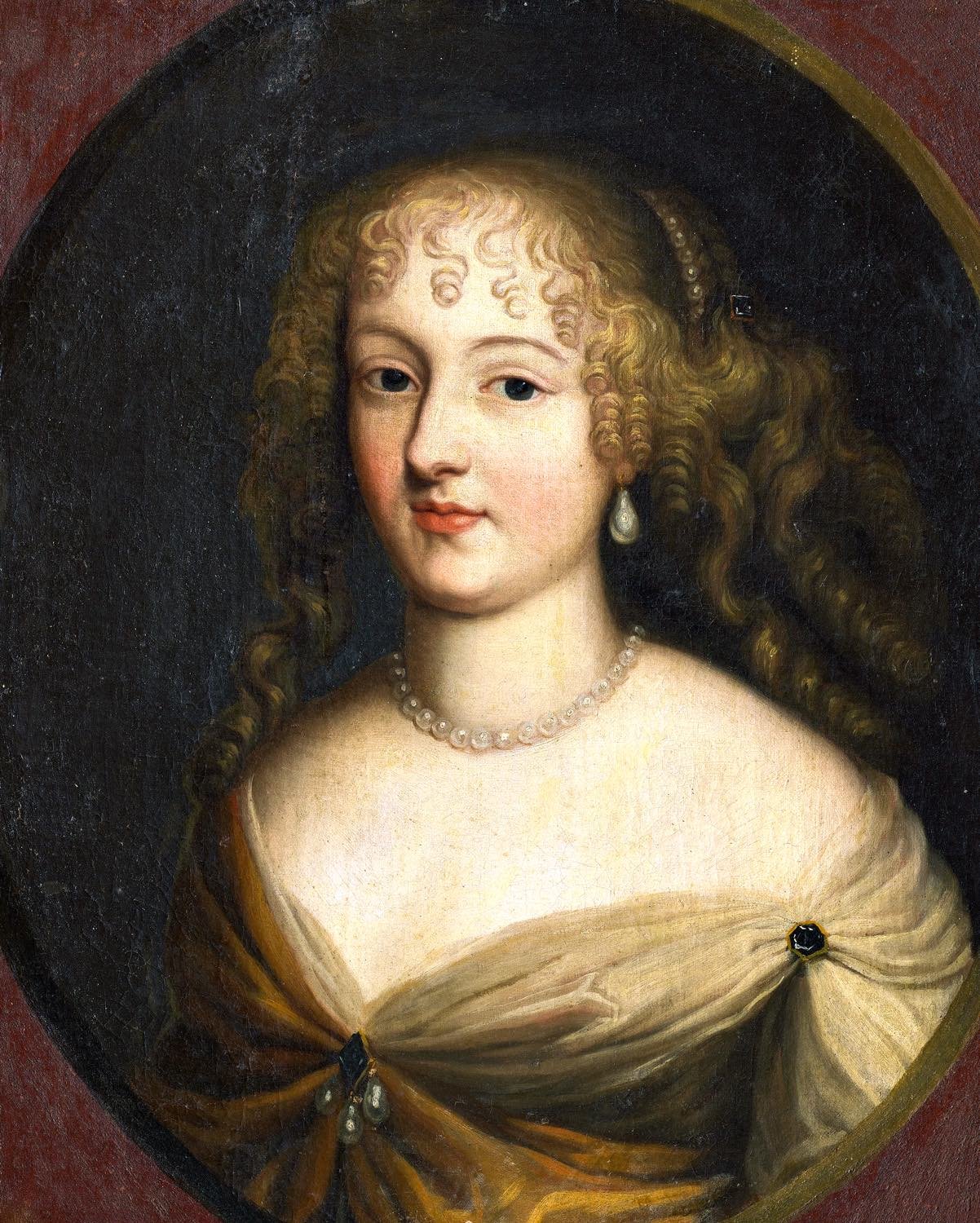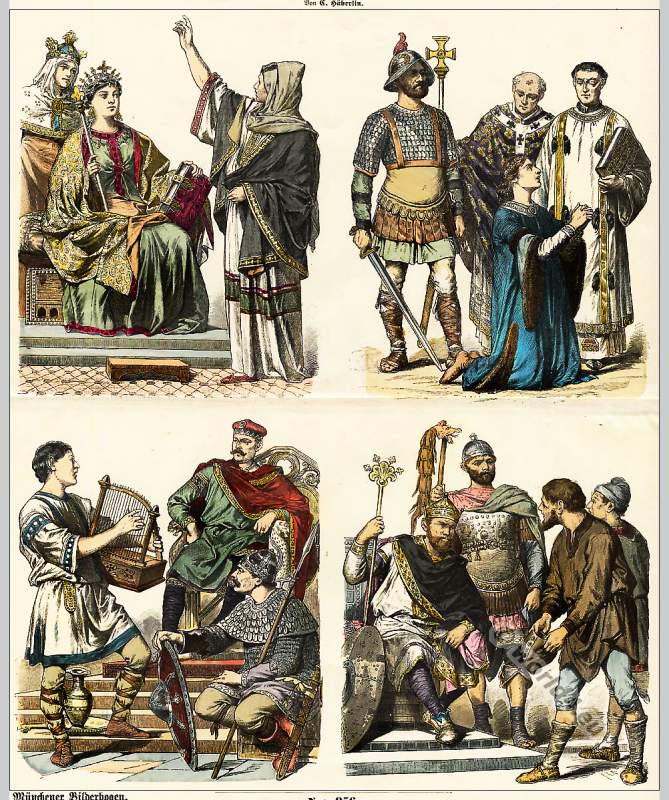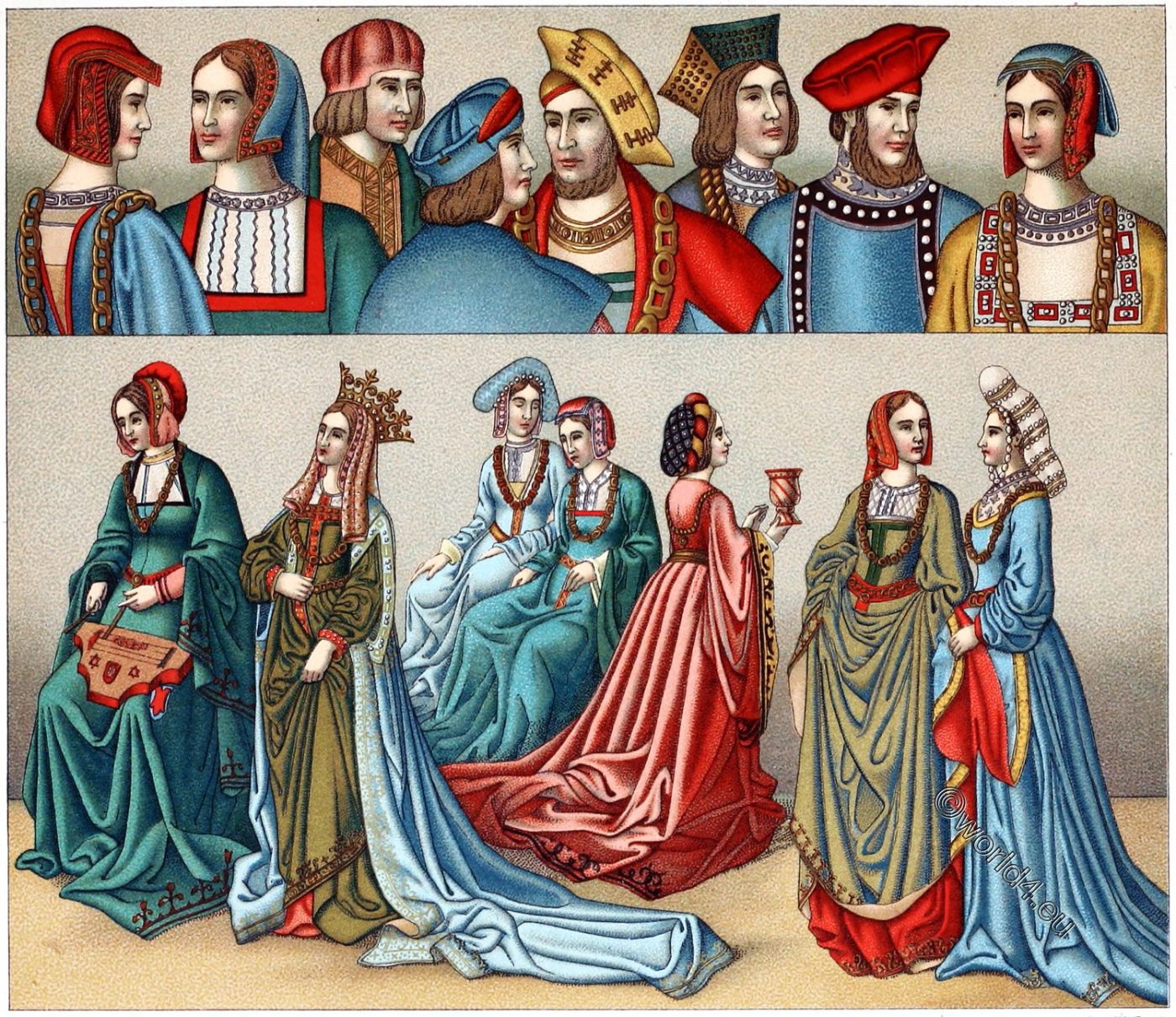
1 2 3 4 5 6 7 8
9 10 11 12 13 14 15
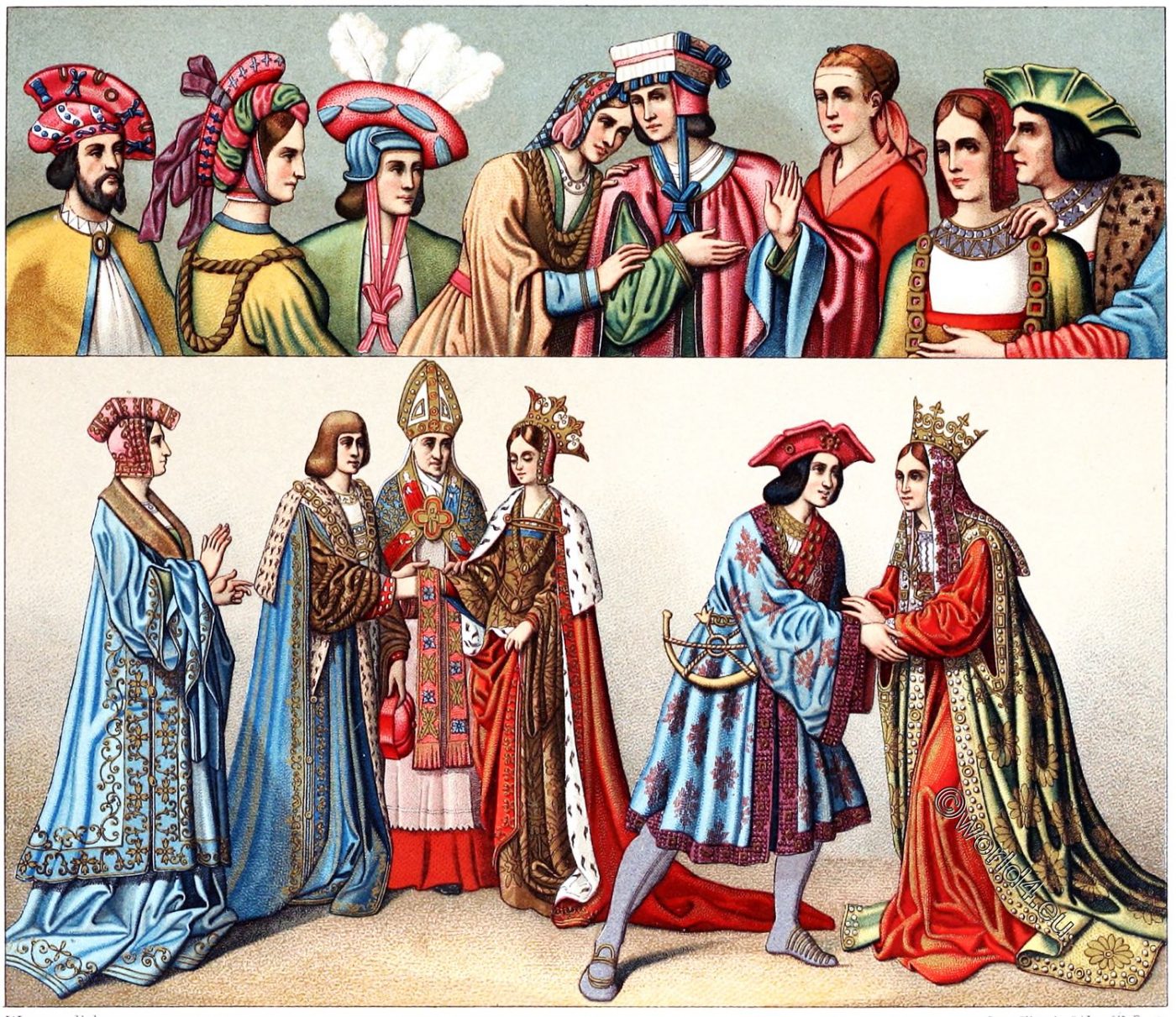
16 17 18 19 20 21 22 23
24 25 16 27 28 29
Civil dress in Europe at the end of the late 15th century. Female and male hairstyles and headgear. Costume history of the Middle Ages. The time of Louis XII of France.
Civil dress of the late 15th century.
EUROPE – MIDDLE AGES. FRANCE. COSTUMES FROM THE END OF THE XV. CENTURY
The figures united on these two panels are taken from carpets from the time of Louis XII of France. Although Italian character can be found in the headdresses of some women, the Italian influence is not yet as noticeable as it was a few years later. The wide, heavy and closed costumes still show the character of the Middle Ages. Only at the bib the effort to show the fine Frisian lingerie can be seen.
The women wear skirts and overskirts, both of which are so long and heavy that they had to be picked up when walking so as not to stumble. The sleeves of the skirt were usually very wide. Sometimes they were also folded at the wrist (nos. 10, 15, 29) or arm and hand were put through an opening so that the rest of the sleeve fell down (No. 19).
The bib of the fine shirt, which rose up to the neck, is richly embroidered with golden, silver and coloured threads and even with pearls. In addition, there were also closed (no. 17) and pointed cut dresses (no. 19). Belts, which are sometimes higher and sometimes lower, can be found on all outer garments. They are either set with goldsmith work or simply embroidered and are closed with a buckle through which the lower falling end is inserted. Coats were still worn over the outer garments, which were lined or decorated with fur, as can be seen in three examples on our table (nos. 10, 27, 29).
The bonnets, which covered the hair completely except for the part above the forehead, are of Italian origin. Ears and neck are also covered. A square piece of fabric which fell from the bonnet was picked up in the neck and attached to the crown of the head, as can still be seen on Italian, especially Roman, peasant women in the 19th century (nos. 1, 8, 12).
Sometimes, however, this piece was also dropped on the back (nos. 2, 14, 19). In addition to these simple headdresses, one also wore bulbous caps, the chaperon, (nos. 11, 24) and the crown (no. 27), which sat almost entirely on the back of the head. A veil was probably also attached under the crown. Sometimes the cheek parts of the bonnets were turned down (nos. 9, 19), or the bonnets were provided with a turban-like bead at the back (no. 9) or with a double turban, which was fastened under the chin with ribbons (no. 17).
One also wore the big bonnet without the smaller ones under it (No. 15). Beside it they also covered the head with a simple net of velvet ribbons, which was provided with a bead in front (No. 13). Costume no. 24 has a slightly different cut, since the overgarment is considerably shorter than the undergarment.
With the male costume either the doublet goes up to the neck or one finds more or less wide necklines, which are bare or are covered by bibs. The overgarment had different shapes. No. 28 wears an open front upper skirt with wide sleeves, No. 23 has a fur-trimmed upper skirt, the sleeves of which are slit in the middle to allow the arms to pass through. Nos. 4 and 5 show the turned-down coat collar of this top skirt. 3 and 4 wear small caps with a cutout above the forehead. No. 10 wears a wide topcoat with slits for the sleeves to pass through. No. 25, which is worn at the marriage ceremony, has lapels and collars of ermine.
The male headgear consisted of caps and pleated hoods, the latter of which had an unfolded brim over which the former were worn. Nos. 3, 5, 20 show that round and square hats were also in use, which were also worn over the caps. From the hats there were also ribbons hanging down, which were knotted together at the front over the edge (Nos. 18, 20). The caps worn over the caps were usually put on crooked, also decorated with feathers, jewels and agraffes. The men are either beardless or wear the beard short cut. No. 28 is a hunting costume. He wears shoes which have the shape of a duck’s beak. The pointed shoes had been out of use since the mid-eighties of the XV century. The hunter is girded with the hunting horn. Lady No. 9 plays a lute with wooden sticks.
(After haute-lisse carpets of Flemish origin in the possession of Sir Richard Wallace (exhibited in 1874 in the Palace of Industry in Paris) and after carpets in the possession of Mr Dubouché in Limoges, from which the latter’s nos. 9 and 21 are taken. The former depict scenes from novels of chivalry, partly the triumph of Beatrice and her marriage to King Herwig, partly scenes from the novel of the Rose).
Colour lithograph by Chataignon after contemporary representations. Print: Firmin-Didot et Cie., Paris.
Source: History of the costume in chronological development by Albert Charles Auguste Racinet. Edited by Adolf Rosenberg. Berlin 1888.


